As you wake up on a frosty autumn or winter morning, it’s hard not to envy a swallow, 9,600km away in southern Africa with the sun on its back. Some of our swallows will spend this very day flitting around herds of grazing animals, such as elephants, buffalo and wildebeest, snapping up flying insects disturbed by the herbivores’ feet. Once back in the UK, they will do the same around herds of cows.
About 50 bird species in all leave our shores each year on a substantial southward journey, to spend the British winter in gentler climates. But at the same time, many bird species – such as geese, swans and ducks – migrate to Britain in autumn, overwintering on our shores before leaving once more in spring.
So why do birds migrate? Where do birds migrate to? Which bird species arrive in the UK in autumn and which ones leave ahead of winter? Looking ahead, which bird species arrive in spring and which ones leave before summer?
This BBC Countryfile Magazine guide to bird migration explores all these questions and more.

What are the different types of bird migration?
Seasonal migration
This is a movement between breeding and non-breeding ranges. Summer visitors arrive from the south and winter from the north.
Latitudinal migration
This is the migration from northern regions to southern, and vice versa.
Longitudinal migration
Particularly common in continental Europe, this is the movement of birds between eastern and western regions.
Irruptions
Irregular migrations are caused by a lack of food and water, resulting in large numbers of birds flying to unfamiliar areas.
Nomadic migration
Like irruptions, these result from a lack of vital resources, but birds cover shorter distances and stay within a familiar range.
Altitudinal migration
This is a movement from high to low ground during the colder months, usually over short distances. Skylarks do this.
Moult migration
During moulting season – often a vulnerable time for birds – species such as shelducks head to safer grounds.
Drift
On very rare occasions, migrating birds ‘drift’ away from their normal routes as a result of storms, for example bluethroats in Norfolk.
Reverse migration
This is most frequently seen in autumn when young birds become confused, flying against their expected route.
Dispersal
This occurs when juvenile birds are forced to leave fledging grounds to find new territory – it’s not a true migration.
- Guide to Britain’s geese species: how to identify and where to see
- Guide to Britain’s swans: species identification, folklore and where to see them
- Guide to wading birds: how to identify and where to see
How does climate change affect bird migration?
Climate change is having a major impact on wildlife as warming temperatures or more severe winters are changing the behavioural pattern of many species. Migrating bird schedules are shifting and many are leaving days earlier depending on the temperature and availability of food. Rising sea levels is also changing the migration of many species.
Why do birds migrate to Britain in autumn and winter?
Winter visitors come to the UK from the north and east for the mild climate and abundance of food, then return north and east to breed.
Guide to winter bird visitors
What are winter visitors?
Winter visitors are birds that arrive on Britain's shores in autumn, then leave again in spring.
Different types of winter visitors
Redwing
Similar in appearance to the song thrush and mistle thrush, the redwing is the smallest of the thrush species found in Britain. It can be identified by the orange-red patches under its wings, and by the creamy stripe over its eyes. Only a couple of pairs nest here, with the majority arrive in here in autumn to feed on berries, before leaving again in March and April.

Fieldfare
The fieldfare is another thrush that visits Britain in winter, larger than redwings and song thrushes, but a little smaller than mistle thrushes. It can be told apart by its grey head and rump. They arrive here from October onwards, and begin to return in March.
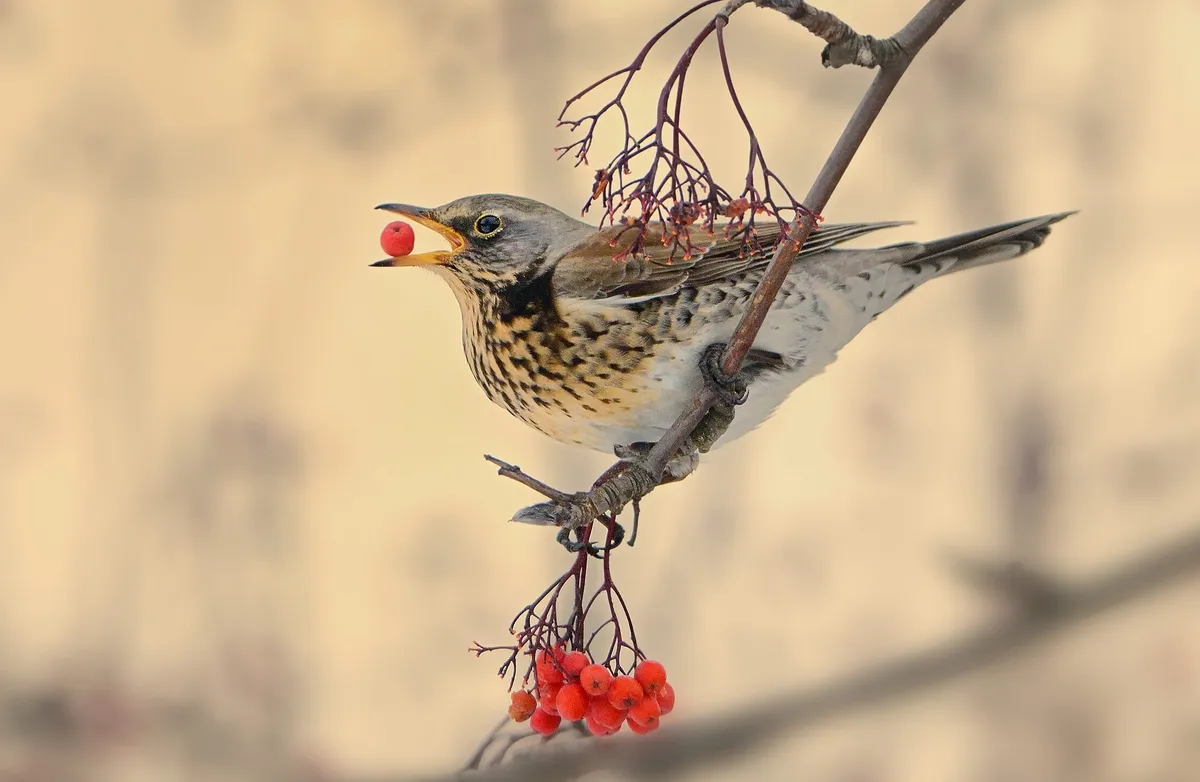
Bewick's swan
The Bewick's swan is the smallest of the swan species found in Britain, sheltering here in farmland, freshwater wetlands and coastal bays. They travel 2,500 miles from Siberia, facing a number of challenges along the way including predation, illegal hunting, and the risk of hitting power lines. In February 2021, a flock that had started their migration back to the Arctic were forced to return to Gloucestershire due to Storm Darcy.

Barnacle goose
This small goose has a creamy face, short bill and black neck and winters in Scotland, Ireland and northern England after breeding in Greenland and Svalbard. There’s a small resident breeding group of 1,000 pairs. Winter population is 90,000.
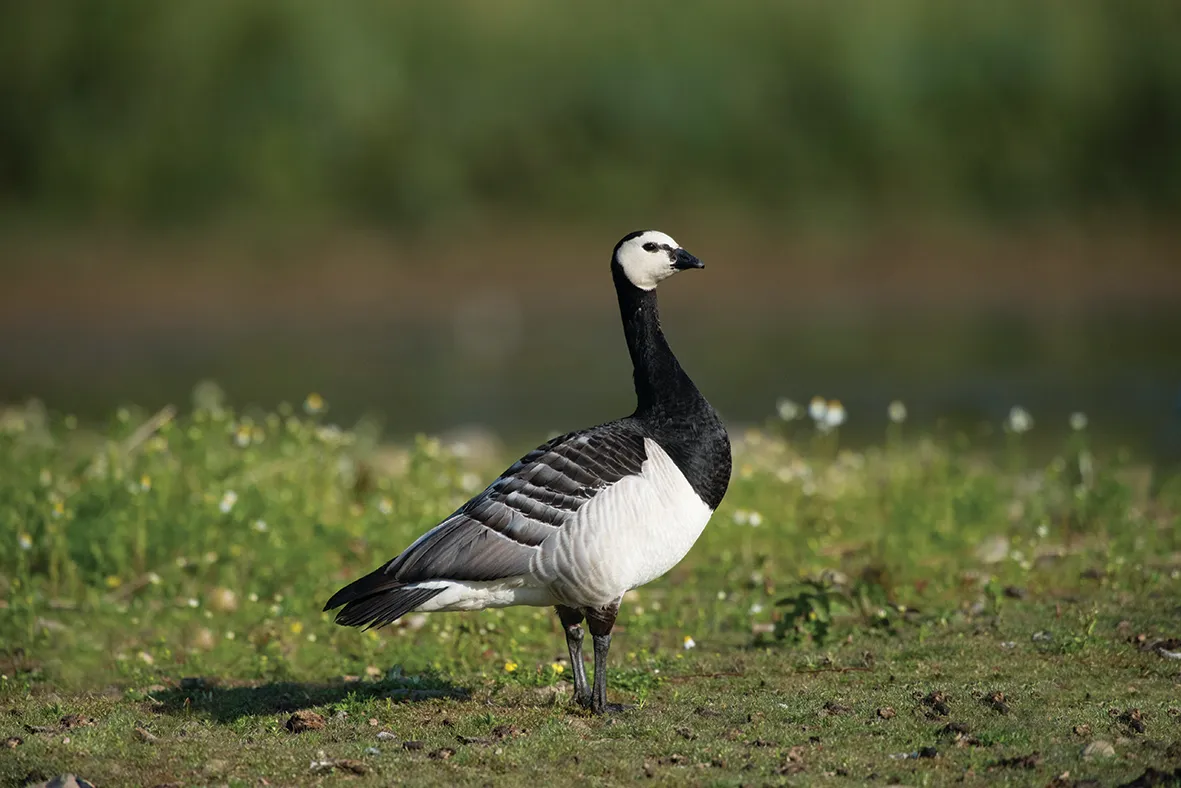
Canada goose
Introduced from North America, there are now 62,000 pairs in the UK and the number is growing. Large and with a brown body and black neck, it has become the UK’s most familiar goose of park lakes. It is seen as a pest in some areas.

Pink-footed goose
This medium-sized goose resembles the white-fronted but has a dark face and bill and pink legs. Arriving from Greenland and Iceland, around 300,000 winter on the east coast, especially Norfolk, though some 50,000 choose Lancashire’s coast.
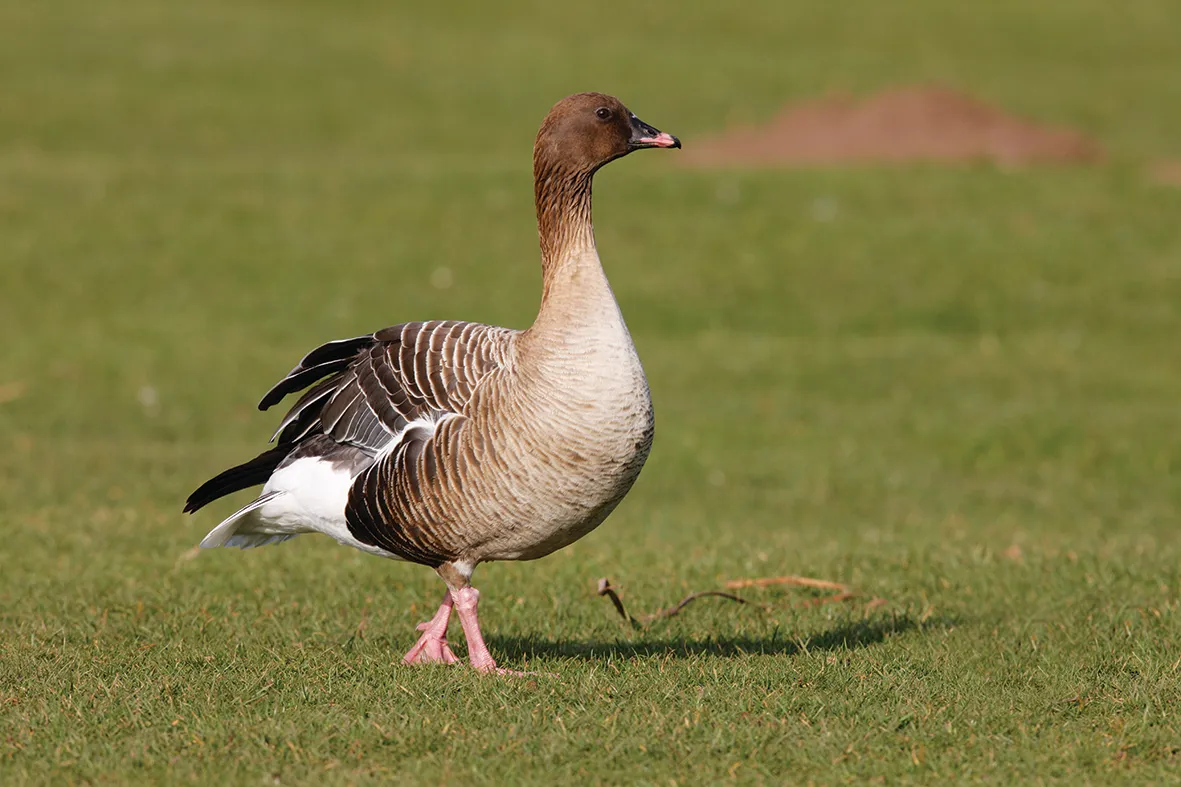
Black-tailed godwit
One of our largest waders, with long legs and a long bill for probing in mud for worms and snails. Orange-brown in summer, it has grey winter plumage with black-and-white wing bars noticeable in flight; 44,000 from Iceland spend winter in the UK.
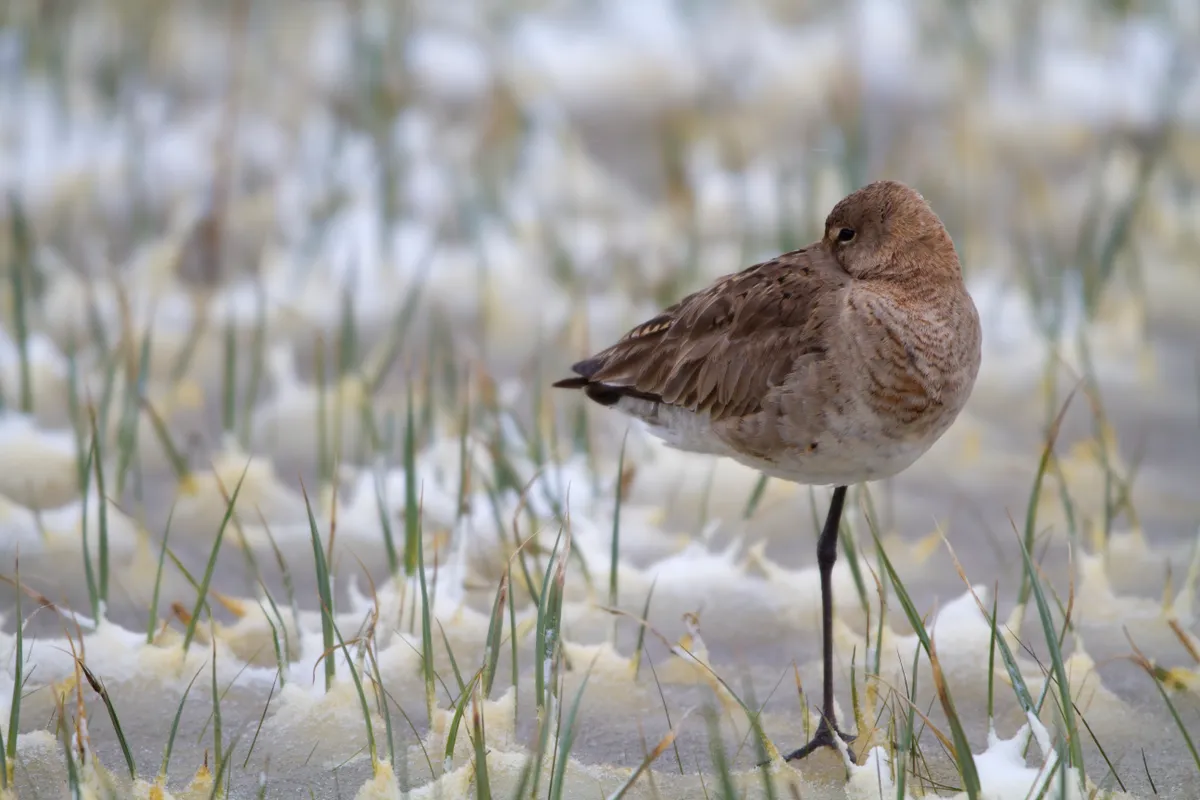
Sanderling
A tiny scuttling sparrow of the sandy shore that seems to dance in and out as the waves lap the beach. It is a winter visitor so we only get to see its grey-white colouring and not the gorgeous tortoiseshell plumage of summer; it breeds in the Arctic.
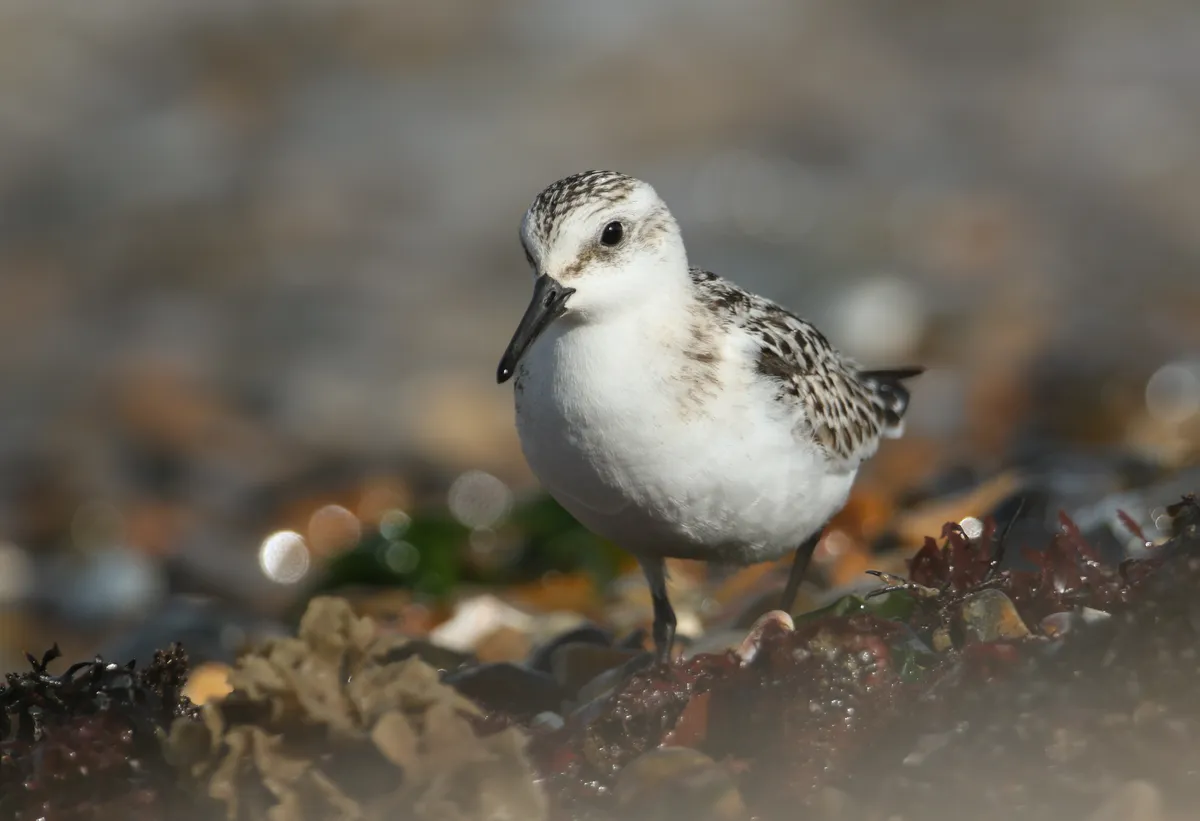
Great northern diver
Great northern divers are thought to be the oldest bird species in the world. Large and powerful, their red eyes may help them see underwater on fishing dives up to 60m deep. They breed in North America and winter on Atlantic shores, gathering in large numbers around the north-west coast of Scotland. A strong north-westerly wind, however, can push them south.
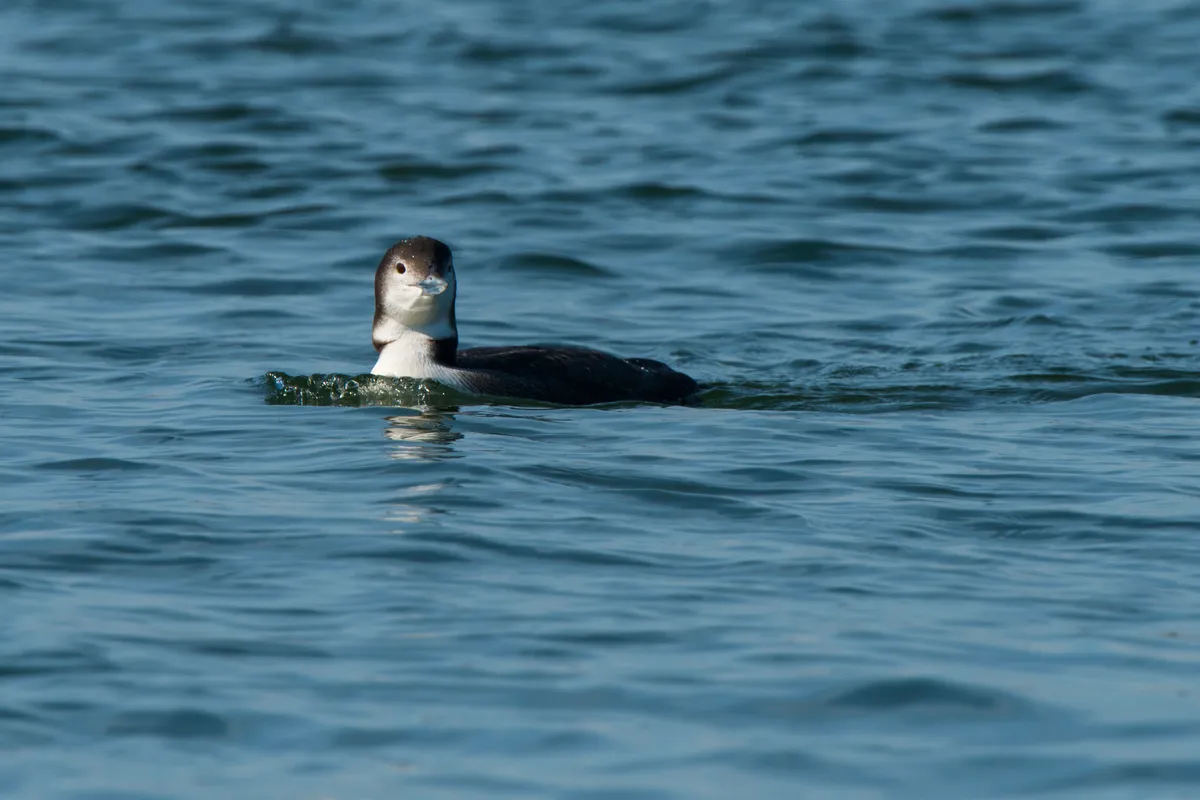
Bohemian waxwing
Arriving in small flocks from central Europe, these exotic peach-tinged birds with black eyeliner and debonair crests are a sign that it’s even colder on the continent than it is here. Bohemian waxwings love hedgerow berries.

Guide to summer bird visitors
What are summer visitors?
Summer visitors are birds that arrive on British shores in spring to breed. They spend summer in Britain, rearing their young before returning south in autumn.
Why do birds migrate to Britain in spring and summer?
The most intriguing question about our summer visitors is not why they go south, but why they return to Britain year after year. On the whole, there are two factors that compel them to come here. First, there is plenty of room to hold territory without being crowded out by African birds.
And secondly, the long daylight hours allow birds to feed their young for longer every day, helping them to grow quickly. And it is this, on a February morning, that beckons the swallow northward. February is the big moving month – soon it will be on the wing.
- British birds of prey guide: how to identify raptors and where to see
- Guide to tit species in the UK: how to identify and where to see
- British duck guide: identification, species, facts and where to see
Where do summer visitors migrate to in autumn and winter?
Most of bird species that leave Britain in autumn go to Africa, but not all. The Manx shearwater flies across the oceans to spend the winter off Argentina, while, famously, the Arctic tern swaps the extreme north for the extreme south, reaching and sometimes circumnavigating Antarctica.
At the other end of the scale, birds such as blackcaps may take the short-haul option and while the winter away in Spain, alongside human ex-pats.
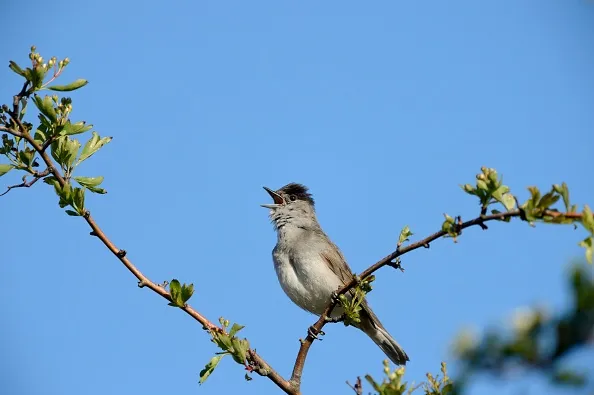
Why do birds leave Britain in autumn and winter?
The advantages of going south are obvious, particularly for insectivorous birds. Swallows and nightingales would be taking a big chance to risk a British winter, when just a few very cold days could be enough to starve them to death. Further south there is more food all year round, but there is also much more competition. Not only are there African resident birds, but also migrants from Europe and Asia. A patch of scrubby African forest is quite a melting pot of nationalities between October and March.
Wherever they end up, there is no doubt that their immediate surroundings will look considerably different to the frigid, bare British countryside in winter.
In Spain or North Africa, migrants will forage among olive leaves and evergreen scrub. Willow warblers in tropical Africa feed in the crowns of acacia trees on lush savannah, where only giraffes can reach. Cuckoos will disappear into dense forests, while garden warblers will head into thick montane scrub with a biodiversity many times higher than ours.
Northern wheatears swap moorland for semi-desert landscapes, and nightingales will sometimes throw off the reticence they show in the UK and feed in gardens and patches of cultivated land in Africa.
More about Britain's birds
Do birds change their behaviour when they migrate?
Much as ‘our’ birds find themselves in a changed landscape, they do not become fundamentally different. A spotted flycatcher in tropical Africa does what a spotted flycatcher does in Britain: it makes darting sallies to catch insects in flight. It might catch termites and other exotic invertebrates, but its feeding methods are much the same.
Arctic terns dive for fish, turtle doves eat grain on the ground and reed warblers climb up and down stems of marshland plants with their strong feet, just as they do every day of their lives in the UK.
If anything, it is our resident birds that change diet the most when our migrants leave these shores; blue tits and many others switch from feeding on caterpillars and other insects to a diet of seeds and nuts.
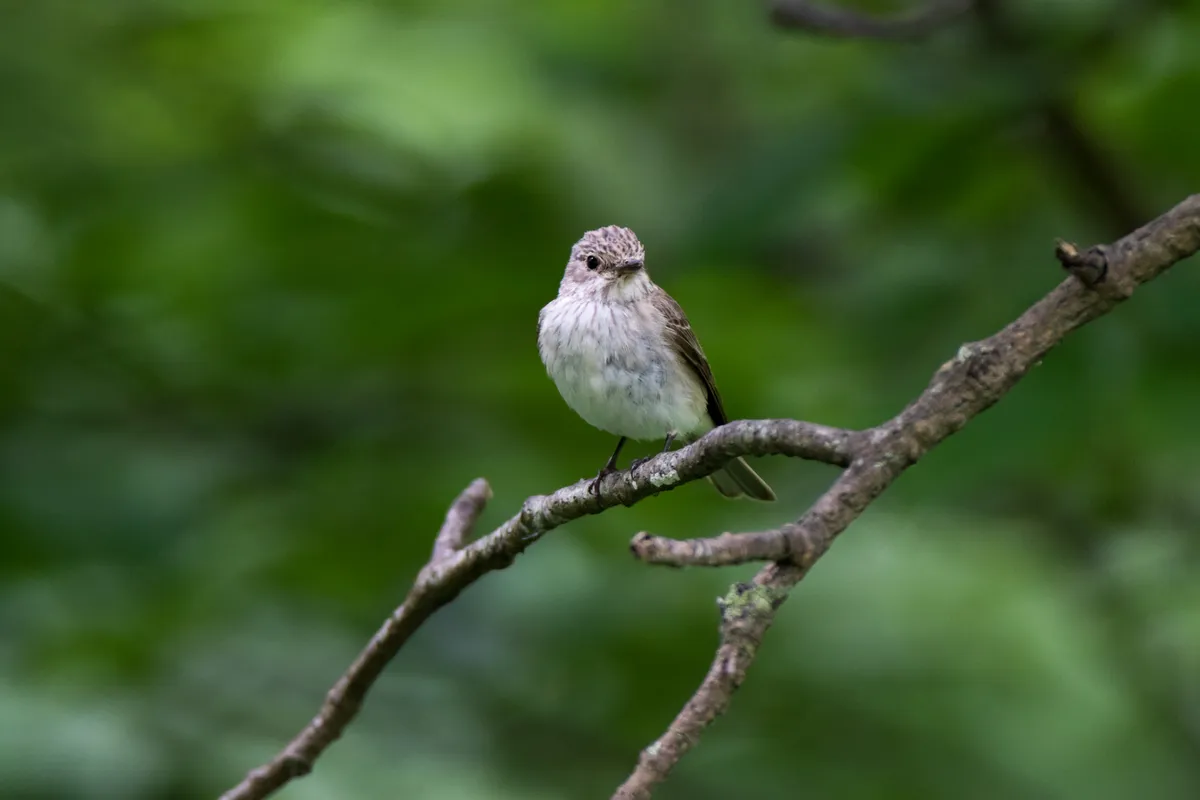
How long does it take birds to migrate?
It’s easy to forget that our migrants don’t just wake up one morning under African skies. Most take a month or more to get to their wintering grounds, and they must adapt to any places they pass on their travels, as well as their destination. They need to overfly the English Channel and the Mediterranean, then the Sahara Desert. Settling into the African bush must be easy by comparison.
Different types of summer visitors
Osprey
The osprey’s practice of hunting fish by plunging into water from a height is easily translatable from Britain to West Africa, where our birds winter. The practice also works equally well in salt water as in fresh. Five thousand kilometres away, our birds mainly stay on the coast in winter, fishing in the shallow, sheltered water just offshore, or along large rivers. They compete with African fish eagles in some areas.
In Britain, ospreys arrive in March and April to inhabit freshwater lakes, mainly in Scotland. They’re also found at Rutland Water, in the midlands, and in Poole Harbour, Dorset.
- Where to see an osprey in the UK
- White-tailed eagle vs osprey: what's the difference between these two stunning birds of prey?
- Ospreys' migration: a guide to when, where and how long these magnificent birds travel for
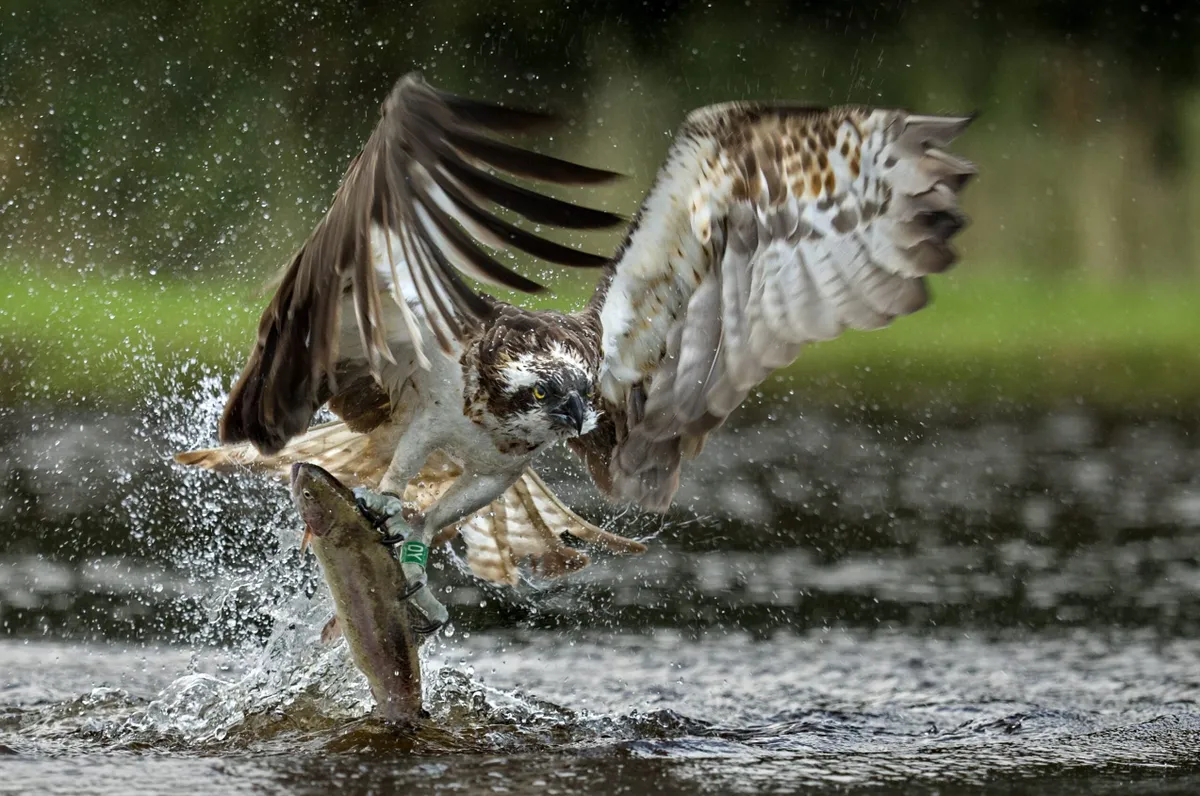
Wheatear
The wheatear is mostly a bird of cropped grassland and moorland, commonest by far in northern Britain. In October it departs for Africa, with European birds spreading across from west to east just south of the Sahara. They settle in distinctly arid areas, often at altitude, with rocky outcrops, where they keep a territory and defend it aggressively from other birds. They feed on invertebrates in the same way everywhere, perching on a rock or bush-top to survey the scene, then running or flying after their prey.
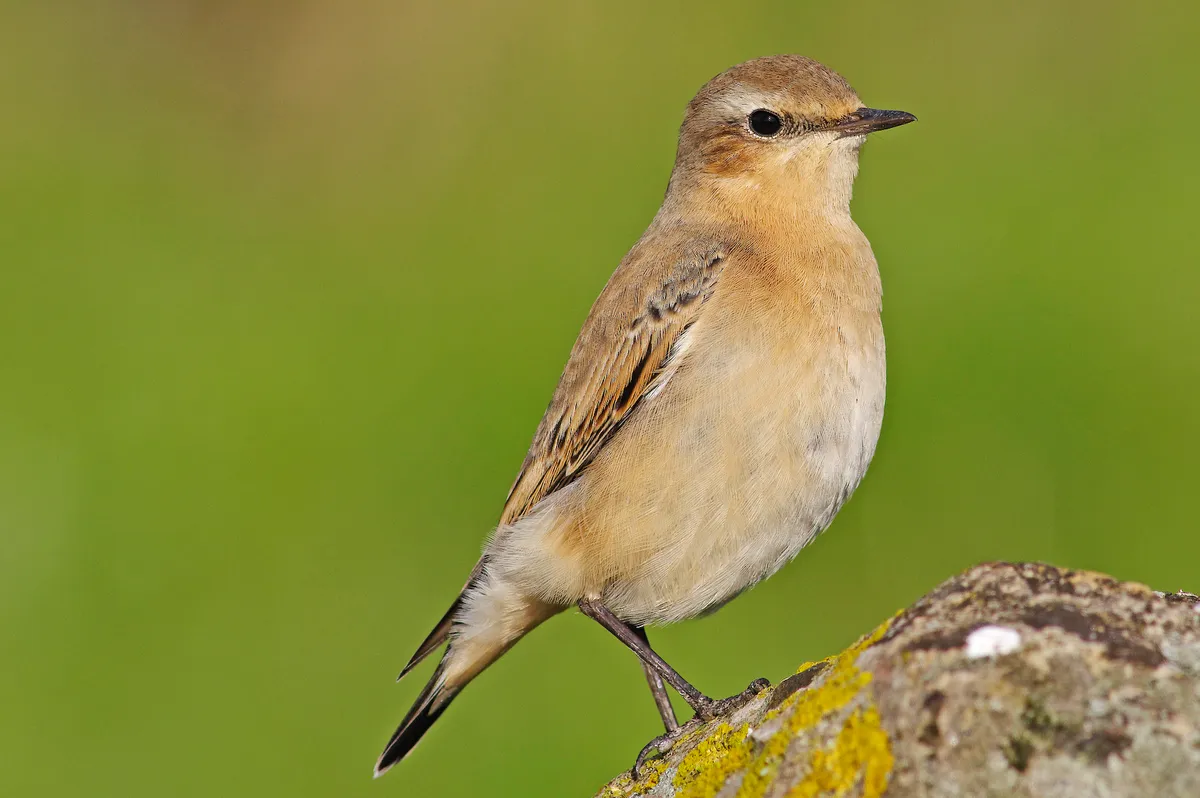
Chiffchaff
Migrant chiffchaffs leaving these islands can winter anywhere between Spain and tropical West Africa, with the bulk settling around Senegal, just south of the Sahara. They live in a wide variety of scrubby areas, often in arid regions – rather a different profile from the tall, lush deciduous woodland that is their typical British breeding habitat. Chiffchaffs use the same foraging methods, restlessly searching the leaves for small invertebrates. They leave their wintering grounds in February and arrive back here in March. The chiffchaff is widespread, breeding in woods throughout Britain.
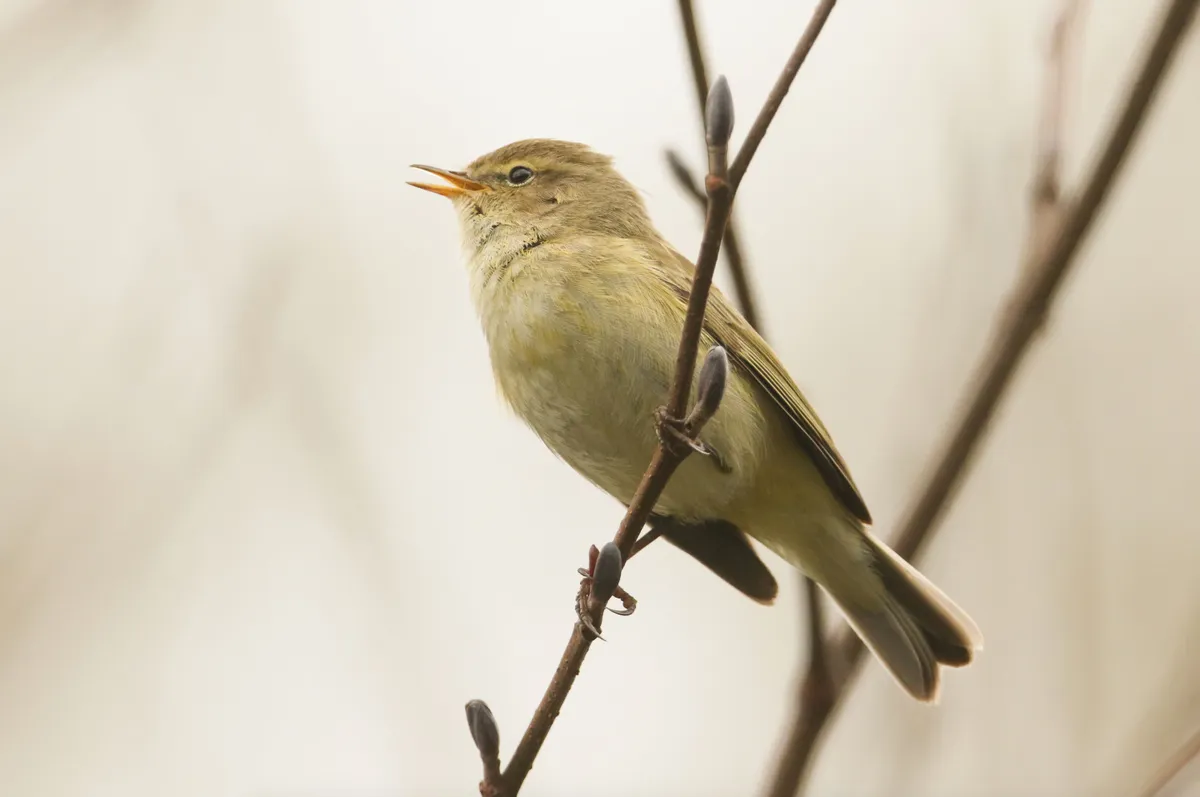
Yellow wagtail
This buttery-yellow delight is a much-declining bird of meadows, wetlands and arable farmland. One of the best ways to see it is at the feet of horses and cattle, feeding on the flies disturbed by hooves. Translate that to Africa, and you can add in zebras and elephants. The yellow wagtail winters across tropical Africa, but most of our birds are in the west. They feed in much the same way everywhere, dashing after invertebrates on the ground, or darting into the air. In Britain, they’re found mainly in central and eastern England, from April to September.

Redstart
In Britain, this delightful robin-like bird is strongly attached to the sessile oak woods of the north and west with their tangles of lichen and moss, dripping with insect life all summer long. Perhaps surprisingly, it swaps this lavish habitat with much drier, scrubby habitats in the Sahel of West Africa, even in Mali, much of which is desert. In Africa, it probably spends more time feeding on the ground, like a robin.
Common in much of Britain, you can find redstarts in the New Forest, Central Wales and the Lake District, as well as much of Scotland.

Swallow
The swallow has one of the longest migrations of any bird, with the British population heading for the eastern part of South Africa, where they arrive in November as harbingers of spring. They feed there in much the same way, swooping low to catch juicy flying insects, although they also nab some seeds from Acacia cyclops, hovering at the tips of the branches. They also roost in huge numbers in reed beds.
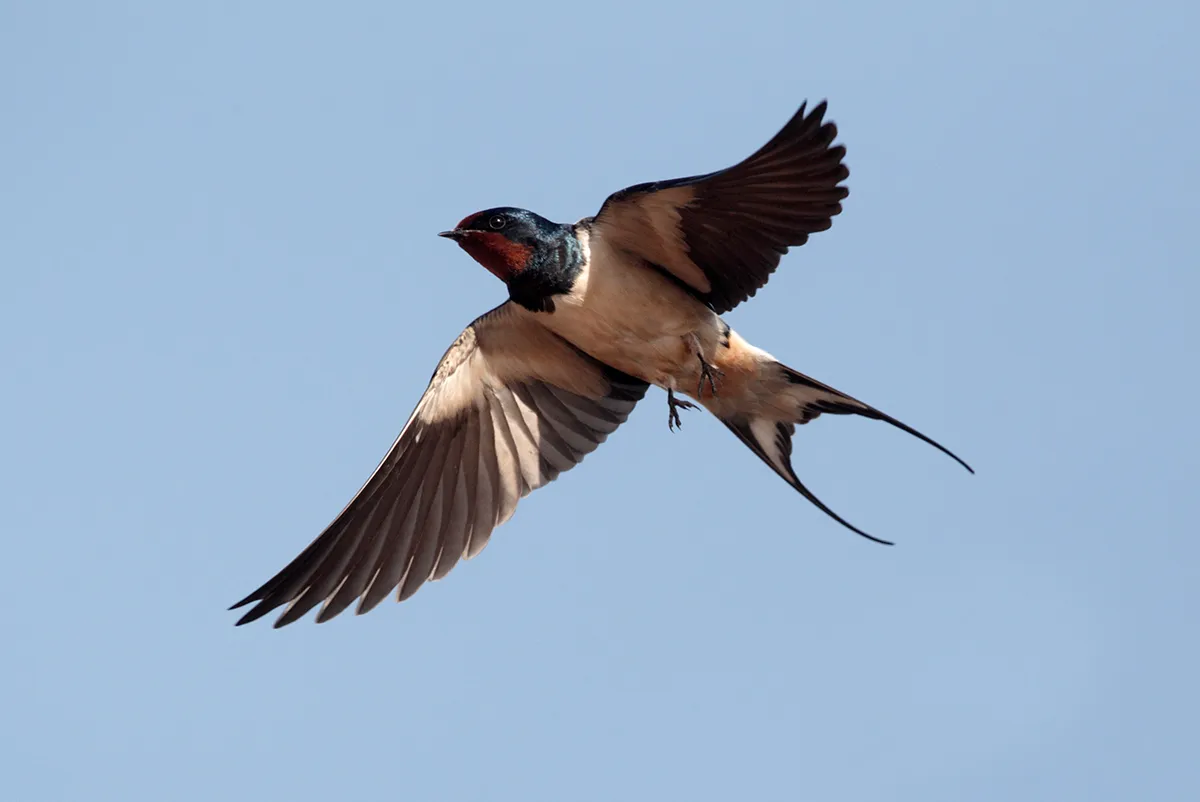
Swift
Swifts arrive in Britain in late April or early May, and are a welcome sight and sound in the skies. However, they don't stick around here long – staying just long enough to breed before beginning their autumn migration back to Africa in late July or early August. It's believed that their autumn migration is prompted by fewer insects in the air.
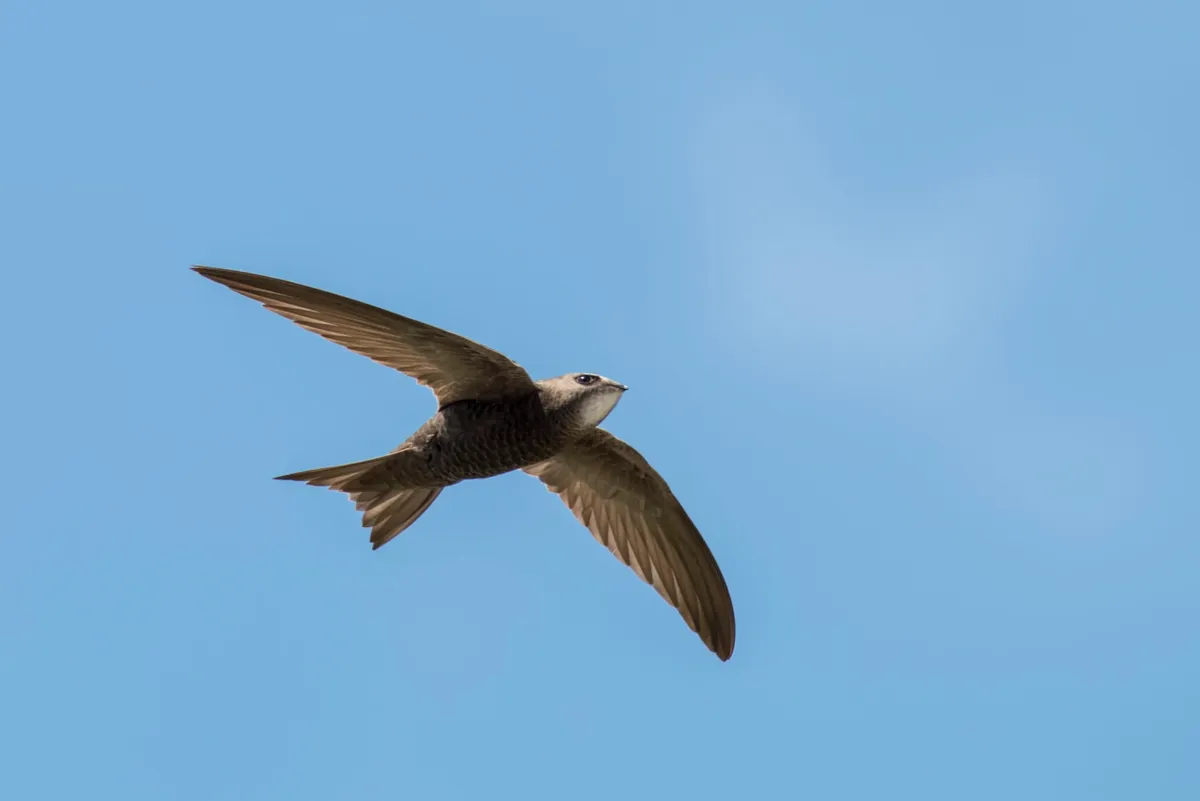
Turtle dove
It’s quite unusual for a seed-eating bird to be a long-distance migrant, but the turtle dove breaks the rule, leaving in September to fly to the Sahel region, a dry, scrubby belt south of the Sahara, in countries such as Mali and Senegal. Here it is much more arid that in the farmland of Britain, although the turtle dove simply feeds on seeds and grains, as it does here. Now rare in Britain after a drastic decline, the turtle dove occurs principally in South East England. Look for it in summer at the Knepp Wildland in West Sussex, Martin Down in Hampshire, and much of East Anglia, such as RSPB Fowlmere, Cambridgeshire.
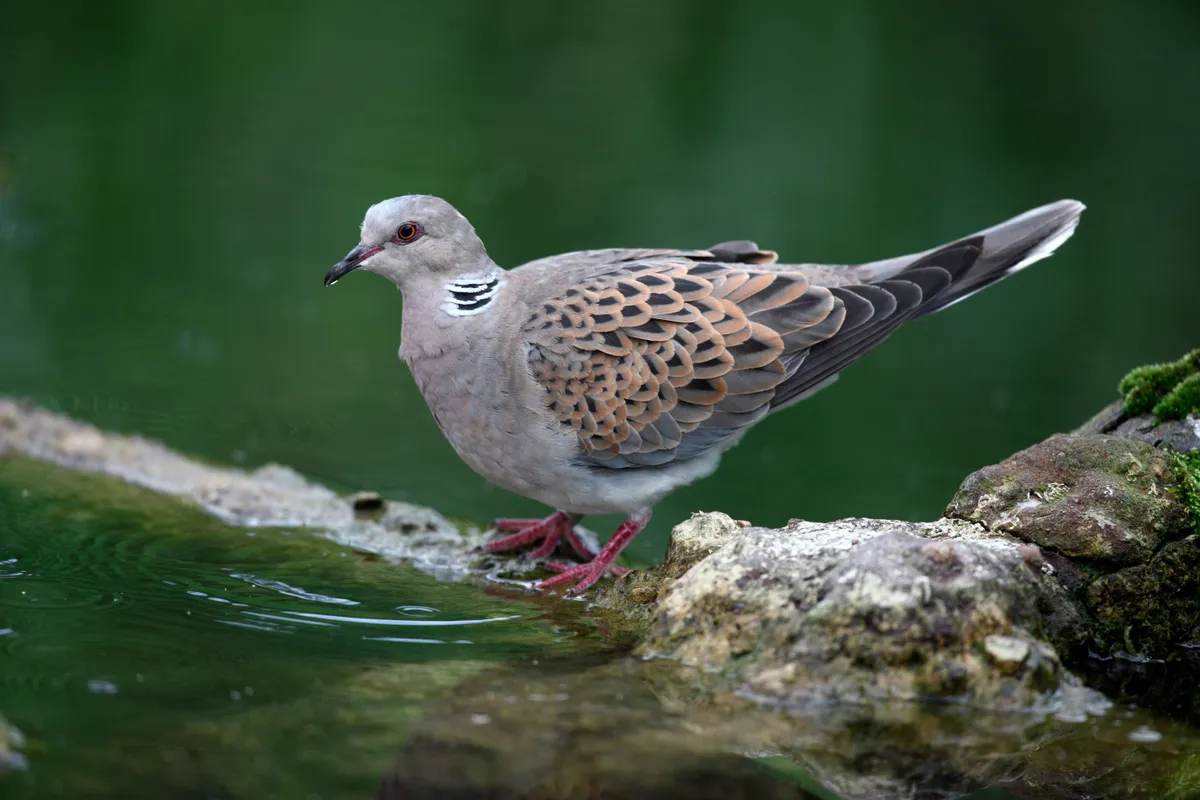
Cuckoo
Tracking of cuckoos in recent years has revealed much about their extraordinary migration. Many adults leave Britain on their southward journey as early as June. They then fly to West Africa (Nigeria for example), followed by a journey into the deep rainforest of the Congo Basin – a minimum of 6,500km –where they spend most of the winter. This is a completely different habitat to the marshes, moors and farmland they inhabit in Britain, and they are hardly ever seen in the rainforest.
The cuckoo returns to Britain in April. Following a big population decline in the south of England, they are now most common in northern England and Scotland.
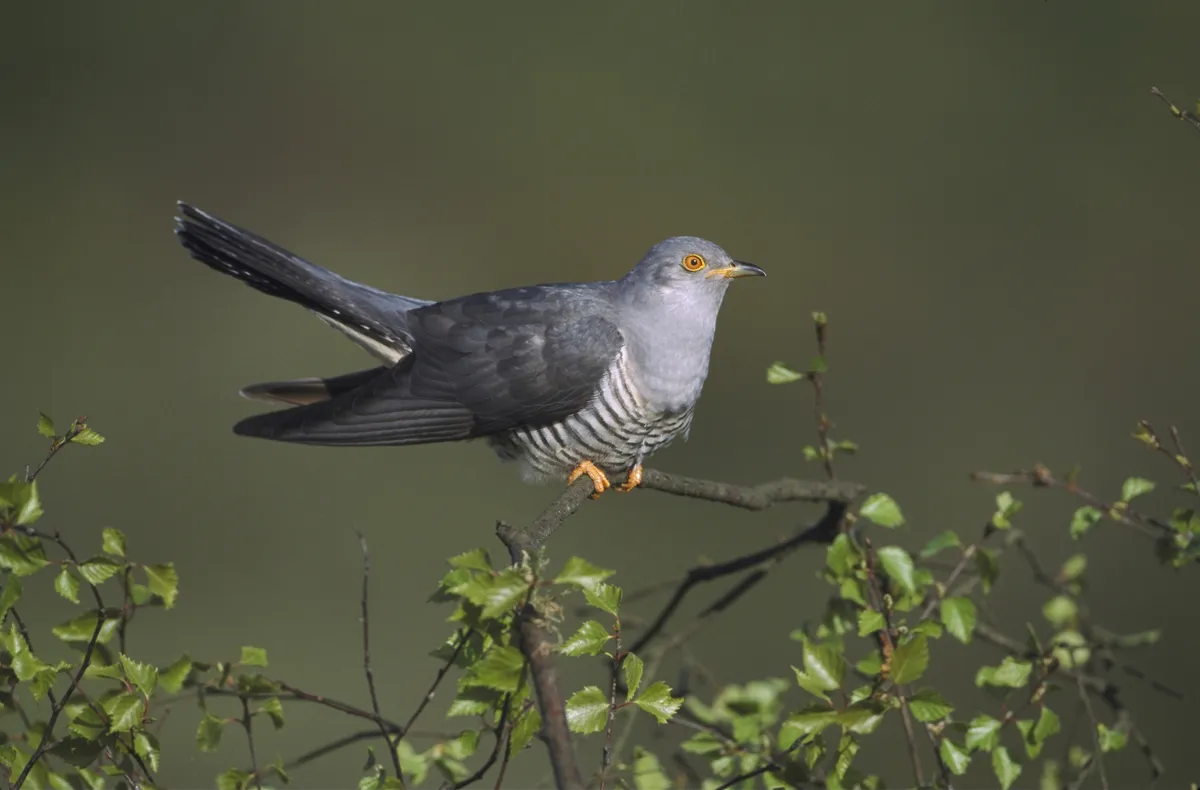
Blackcap
This common warbler is a short-range migrant that winters in southern Spain and Morocco. But in recent years, breeders from Germany and Austria have been flying west to spend the winter with us in Britain, and these birds often visit garden feeders.

Atlantic puffin
What puffins did in winter was a mystery until recently. By tagging these tough little members of the auk family with geolocators, scientists have shown that they head far out to sea, braving several months in the stormy North Atlantic.
Did you know puffins are a species that mate for life?

Whitethroat
In the weeks before it migrates, this hedgerow warbler switches from insects to sugary berries to rapidly put on weight as fuel. It spends the winter in the arid, scrubby region known as the Sahel, to the south of the Sahara.
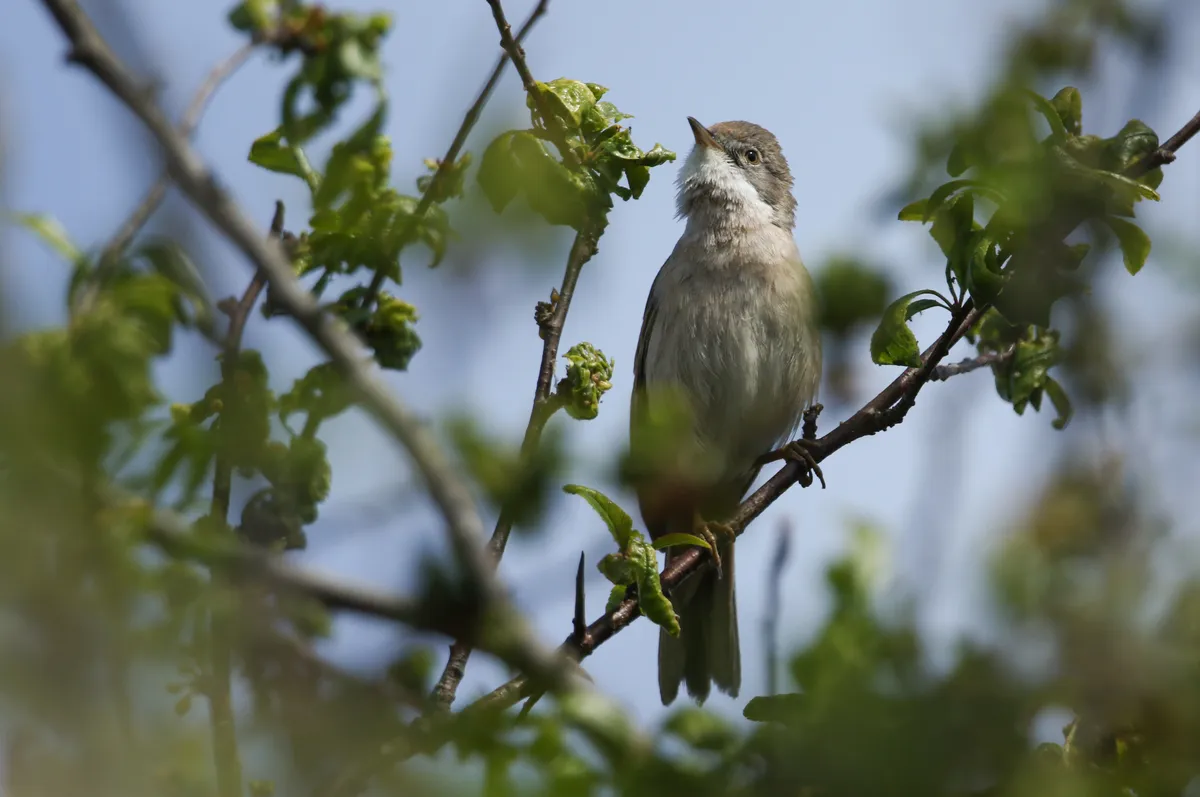
Arctic tern
Nicknamed ‘sea swallows’, these graceful, long-winged seabirds are true globetrotters. They swap our northern winter for the permanent daylight of the Antarctic summer, looping around the Atlantic Ocean to get there in an epic journey up to 35,000km long.

Little tern
The little tern is one of the UK's smallest seabirds and weights only 40-6og. They spend the winter in Africa, and return to the UK in April to nest on our sandy and pebble beaches. Their nests are vulnerable to predation, and to disturbance by humans and dogs. If disturbed, adults will leave the nest, leaving their eggs or chicks exposed to the cold and predators. Little tern nesting colonies are also struggling with climate change, and rising seas and coastal flooding can wash away nests and chicks. Their return migration takes place in August and September.
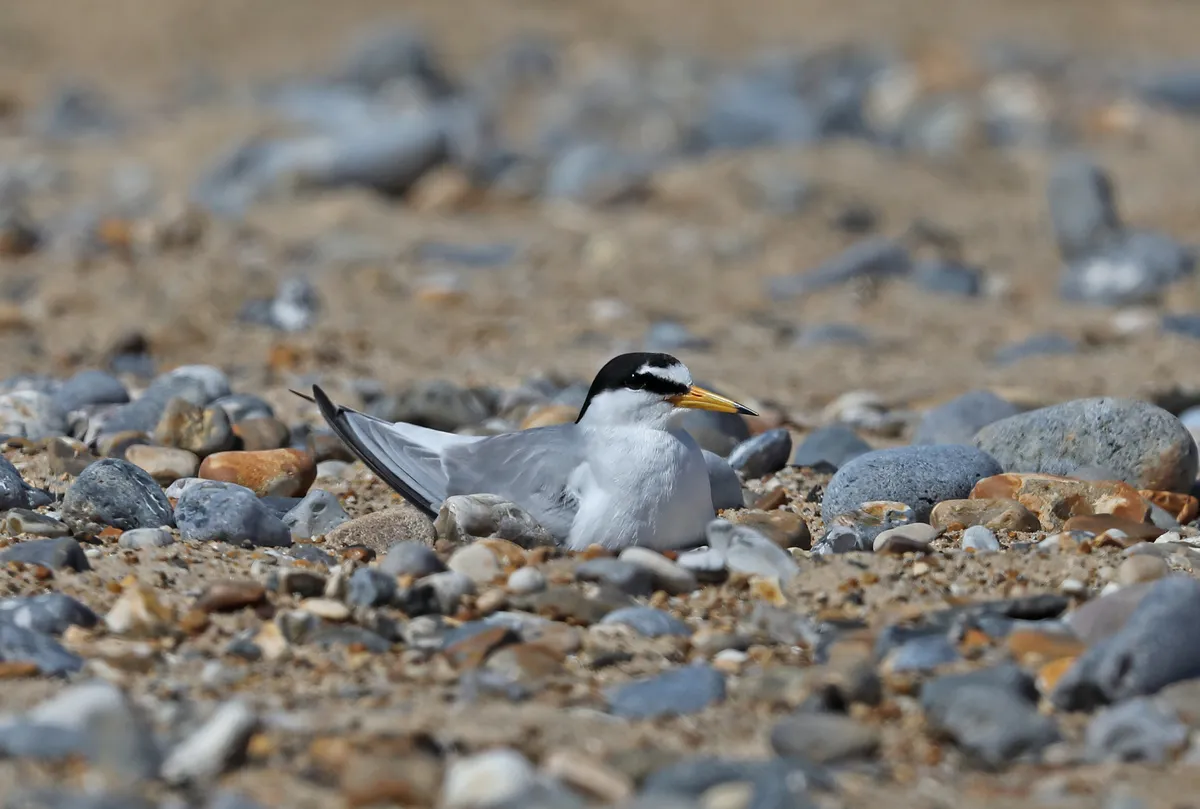
Words: Dominic Couzens, Ben Hoare and Megan Shersby.

